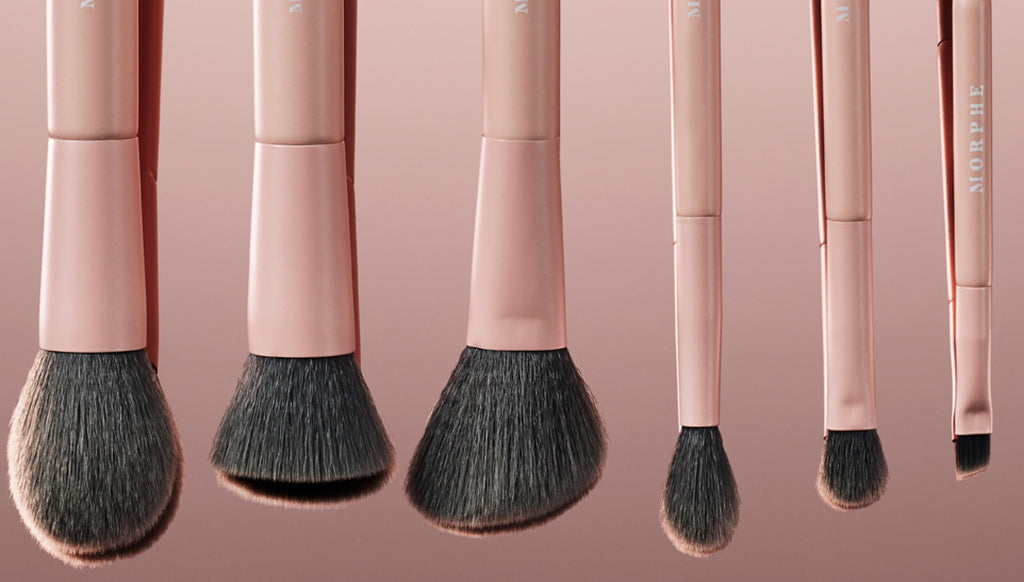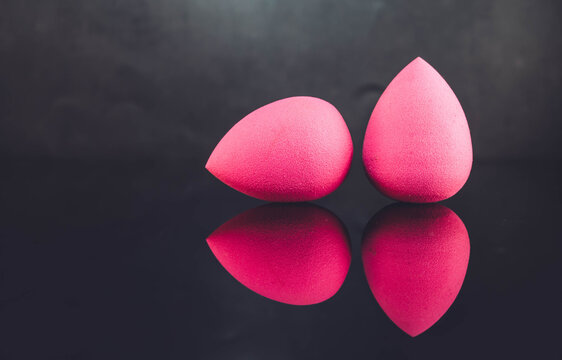How many different types of makeup brushes are there: essential for attaining a beautiful, airbrushed appearance that will allow you to face the day with confidence. However, the vast number of brushes available on the market might make the purchasing process difficult. If you purchase a multi-pack set, you may not even know the names of all of the cosmetic brushes or their intended functions. Sure, using your finger as an applicator is a tried-and-true method for applying foundation, but if you want to progress from amateur to pro in the Beauty industry, you must first equip yourself with the necessary information.
How many different types of makeup brushes are there?
1. Powder Brush.

Powder Brush Guide
A powder brush, whether synthetic or natural, is a versatile tool for various cosmetic applications. This ubiquitous cosmetic brush (you can't find a beauty package without it) is an essential item in your makeup kit.
Dip a powder brush into the powdered product (applies to both pressed and loose powders) and swirl in circles or sweeping strokes until you have uniform coverage. Pro tip: Start in the center of your face and work your way out to ensure proper application. Visit our dedicated Beauty hub here.
2. Tapered Foundation Brush.

Tapered Foundation Brush Guide
Tapered foundation brushes are typically flat and less full in shape, with a mild taper. These brushes work well with liquid foundations and other liquid cosmetics. Discover the many foundation kinds here if you're unsure. To begin, soak your brush in warm water and carefully squeeze away any excess. If it's hot out and you tend to sweat, use cold water for a more pleasant application experience.
The water has two purposes here: one, it ensures an even coat of your foundation, and second, it prevents the brush from soaking any of the foundation, saving you money because the brush will not absorb any of your makeup. However, remove the surplus water by gently wringing it into a towel; too much moisture may dilute your makeup, rendering the product's coverage ineffective.
3. Stipple Brush

Stippling Brush Guide.
A stippled brush has a distinctive appearance—the strands are of two different lengths. The majority of the brush is full fibered and densely packed, with longer fibers intermingled. Stippling brushes are ideal for applying different layers of makeup. This tool may be used to apply primer, foundation, and blush smoothly.
4. Kabuki Brush

Kabuki Brush Guide
Kabuki brushes are among the most impressive-looking brushes. Kabuki brushes often come in bigger sizes with tightly packed fibers, although there are also travel-sized options available. They work best with loose powders on the body and face. Do you want to add some shine to your décolletage? Swirl your illuminating substance in huge circles to get a stunning, magnificent finish.
5) Contour Brush

Contoured Brush Guide
Contouring is a makeup application skill that every beauty enthusiast should know, but it takes effort to master. Worst-case scenario while trying to create a decent contour? Dark, unblended streaks. But we've got you covered, so you'll never leave the home in a two-toned nightmare.
The first step is to get a nice angled contour brush. Angled brushes are preferred over flat brushes since they allow you to follow your face's natural curves.
6. Silicone Blender

Silicone Use Guide
Silicone blenders are often flat, oval, or teardrop shaped. The benefit of utilizing a silicone blender is that it does not absorb anything, which means you do not waste valuable stuff.
To apply, dab foundation and stipple it all over your face, being sure to blend it into your neckline. Tapping movements work best for a more natural appearance, so use quick, staccato motions instead of swirling like a regular brush—swirling with a silicone blender might result in smudged makeup.
7. Beauty Blender

Beauty Blender Guide
The Beauty Blender is a makeup favorite among YouTube beauty stars. The Beauty Blender and other comparable beauty sponges are popular for a reason: they are an excellent tool for applying a wide range of cosmetics. It may be used as a priming applicator to create a uniform, strong foundation. You may also use it to apply sunscreen or topical lotions. Of course, most beauty enthusiasts use it to apply foundation and mix blush, bronzer, and highlighter.
To use with liquid foundation, soak the sponge in cool or warm water before pressing it to eliminate excess water. Water helps prevent the sponge from absorbing any makeup. Now, carefully dab the sponge into the cosmetic product and apply it on the wrist or back of your hand to evaluate the coverage. Then, apply the product to your face with light dabbing strokes. When using a Beauty Blender, remember that less is more.
8. Fan Brush.

Fan Brush Guide
A fan brush is, unsurprisingly, fashioned like a fan. Because of their versatility, these beauty brushes are excellent additions to any cosmetic kit.
For example, they operate extremely well as a mistake corrector. Maybe you're doing a smokey eye and got carried away with the eye makeup; specks of color are everywhere, and you're suddenly a raccoon. Use the fan brush to gently remove any additional specks of color.
 Torikatu Kala
Torikatu Kala
No comments